|
|
|
|
|
|
|
IRANZ members have received a plethora of awards and honours in the past two months, both in-house and in the wider community.
At Motu, Suzi Kerr has been appointed as Chief Economist at Environmental Defense Fund in New York and will start there in April 2019, but will continue her connection with Motu in an advisory role.
At CRL Energy, Troy Dougherty was a finalist for Wellingtonian of the Year in the Science and Technology Category.
Franca Ronchese, head of the immune cell biology team at the Malaghan Institute of Medical Research gave the prestigious Burnet Oration at the 47th Annual Scientific Meeting of the Australasian Society for Immunology.
There are many more. . .
MORE →
|
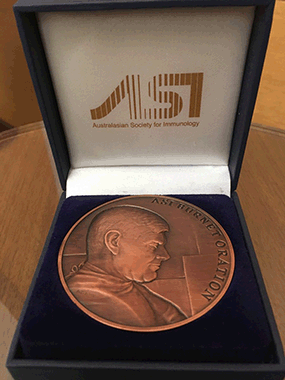
|
The ASI Burnet Oration medal presented to Franca Ronchese, head of the immune cell biology team at the Malaghan Institute of Medical Research. Image: Franca Ronchese, Malaghan Institute. |
|
|
|
|
|
|
PM's Chief Scientist visits IRANZ at WSP Opus
The Prime Minister's Chief Science Advisor, Juliet Gerrard, attended the IRANZ meeting at WSP Opus Research in Petone on 13 September. Prof. Gerrard was very positive about the role of independent research organisations in New Zealand, especially their work in engaging the community with science, their practical focus, and the research work and research centres in the many regional areas of New Zealand.
The meeting was also an opportunity for Dr John Bright to officially welcome new Regional Research Institutes CEOs to IRANZ, Dr Mark Begbie from the PlantTech Research Institute and Tony Hogg from the New Zealand Institute of Minerals to Materials Research.
|
|
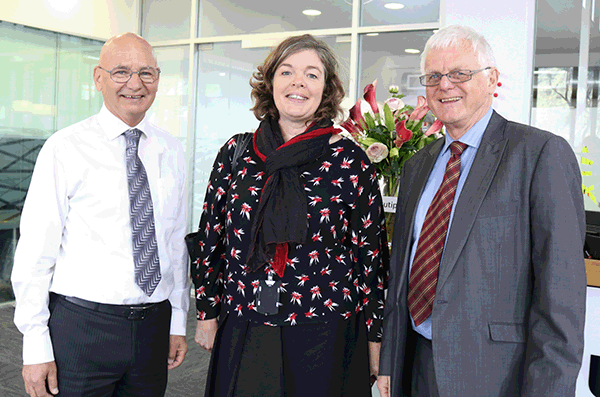 |
|
IRANZ Chairman, Dr John Bright of Aqualinc (left), Prof. Juliet Gerrard, and IRANZ Executive Officer, Dr Rob Whitney. Photo: Louise Thomas. |
|
|
|
|
|
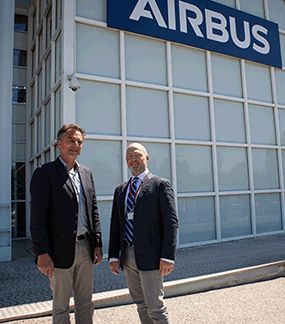
|
Jean-Louis Bellan of Airbus and Steve Cotter, CSST CEO, meet at Airbus Defence and Space headquarters in Toulouse, France to discuss a partnership. Photo: CSST. |
|
Among the flurry of activity by the Centre for Space Science Technology in the past couple of months, the Regional Research Institute has developed several significant partnerships. The first is with NASA on a mission to measure the temperature of plants and use that information to better understand how much water plants need and how they respond to stress. The second is with Australia’s CSIRO to jointly solve the complex challenges that arise from the demands and impacts of human activities on the environment, specifically in the South Pacific. Third, CSST also announced a deal with Airbus to provide access to Airbus’s products in New Zealand and the Pacific.
MORE →
|
|
|
|
|
|
To improve human rights conditions, we first need to be able to measure them. Until now, the world hasn’t had a simple, transparent way to monitor how countries treat their people. This was a problem. When something is not measured, it is easily overlooked and undervalued.
The Human Rights Measurement Initiative (HRMI), hosted by Motu Economic and Public Policy, is filling this gap. They are working to produce a free easy-to-access database of metrics, summarising human rights performance in countries around the world. With a good set of measures, it will be easier to improve human rights.
MORE →
|
|
|
|
|
|
|
|
The New Zealand Construction Industry has the highest percentage of suicide for employed men of any industry in this country. Most of those interviewed as part of a recent BRANZ study, while surprised at the high suicide rate, agreed there was a key driver to the high rates - the poor culture. Described as "macho" and "bullying" and including intolerance of diversity, the culture was seen to significantly contribute to poor mental health of construction industry workers.
The impact on worksite safety of poor mental health is high, with presenteeism being seen as a major health and safety risk for those working on site.
MORE →
|
|
|
|
|
|
|
WSP Opus have several exciting projects on the go, everything from developing roading materials using waste streams such as tyre rubber and plastics with bitumen, modifying chip seals and other road surfaces with non-bituminous materials that are less prone to water damage, to creating roads that will last for 40 years before needing replacing.
MORE →
|

|
Dr Jeremy Wu gave IRANZ members and the Prime Minister's Chief Science Advisor, Prof Juliet Gerrard, a run-down on the research being conducted at the WSP Opus Research facility in Petone. Photo: Louise Thomas. |
|
|
|
|
|
|
Dr John de Pont from TERNZ (Transport Engineering Research New Zealand) has been appointed by Australia's National Heavy Vehicle Regulator (NHVR) to lead a review of their Performance-Based Standards (PBS) tyre standards and operations.
The review will identify the best practice approach for the management of tyres within the PBS scheme.
John is also currently working with the NZTA on formalising the New Zealand PBS system.
|
| MORE → |
|
 |
|
Photo: Prime Mover Magazine. |
|
|
|
|
|
Who you fall in love with and partner with is helping drive wealth inequality according to new research by Motu Economic and Public Policy Research. Their recently released report, "Who partners up?", says educational assortative matching among couples, i.e., the phenomenon whereby the high-educated have partners who are also high-educated, is a not insignificant driver of recent changes in the distribution of household income in New Zealand.
MORE →
|

|
|
|
|
|
|

|
Urban growth and demand for housing have resulted in a move towards high-density and medium-density housing (MDH) such as townhouses, terraced units or apartments, but is the industry up to spec when it comes to acoustic privacy? Research by BRANZ on acoustical design of medium-density housing has found industry knowledge level, regulations, lack of information, integration, and understanding end-user needs as biggest issues.
A key issue for medium-density housing is the need to design and construct walls and floors/ceilings between individual dwelling units to ensure acoustic privacy.
MORE →
|
|
|
|
|
|
Lincoln Agritech Ltd, has developed a new breakthrough technology. An new automated biosensor, known as Milk-Guard, can detect processing losses in dairy plants and could save the industry millions of dollars a year and help prevent pollutants from entering waterways.
The device is currently being commercialised by Christchurch-based start-up company, CertusBio.
MORE →
|

|
A Milk-Guard device in action at a dairy processing plant, operated by Dr Matthew Jones (CEO, CertusBio). Photo credit: Lincoln Agritech. |
|
|
|
|
|
|
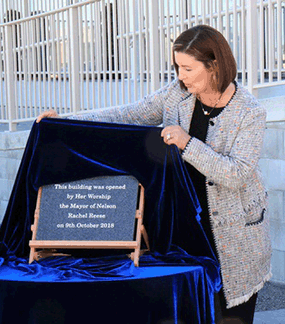
|
Her Worship the Mayor of Nelson, Rachel Reese, officially opened Cawthron’s new Finfish Research Centre on 9 October 2018. Photo: Cawthron Institute. |
|
King salmon make up only around 0.4 percent of the worldwide salmon industry. As a result, most salmon farming research has been carried out on Atlantic salmon, a species that sits within a different genus to king salmon. King salmon are a significant aquaculture species in New Zealand, representing around 32 percent of the industry’s total revenue. Researchers at Cawthron say there is opportunity to increase this further by helping industry to better understand this species.
In other news from the briny deep, it seems that kina are not just a tasty seafood delicacy. Cawthron Institute’s Dr Matt Miller was on Maori Television in October, where he talked about his research into the potential medicinal benefits of wild-harvested kina.
MORE →
|
|
|
|
|
|
Christchurch is underlain by a series of confined aquifers ranging in depths from five metres to greater than 200 metres. These aquifers are highly productive, with yields in excess of 100 litres per second possible from single wells, and the aquifers flow freely under artesian pressure in many areas. This abundant source of water makes the Christchurch aquifers ideal for supporting ground source heat pump (GSHP) systems.
Aqualinc's Dr Helen Rutter and Julian Weir have been researching making these systems an efficient and sustainable option for large-scale heating and cooling.
MORE →
|
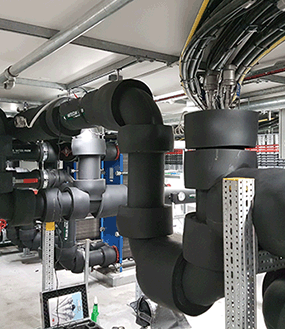
|
A ground source heat pump plant room. Photo: Aqualinc. |
|
|
|
|
|
|
Research led by Dr Roland Stenger at Lincoln Agritech is examining how to better manage freshwater pollution. He says we need to understand the pathways by which nitrogen travels from land to waterways - how fast it travels and how much nitrogen is naturally removed by microorganisms as it moves from the soil through the groundwater into a waterway.
At present, there is little understanding of nitrogen pathways and removal processes at the sub-catchment scale (10’s of km2), i.e. the scale dominated by streams which feed into our rivers. However, it is at this scale that we have the best management and mitigation options available to reduce nitrogen delivery to waterways.
|
|
MORE →
|
|
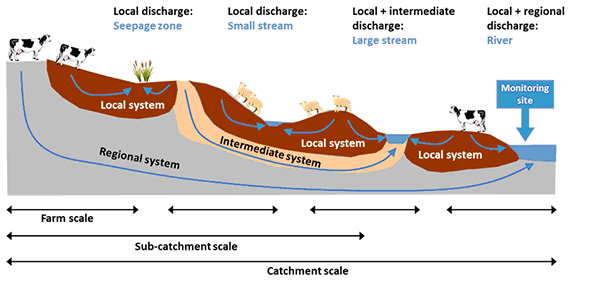 |
|
The shallow and relatively fast pathways that are often crucial for nitrogen transfers at the sub-catchment scale. Image: Lincoln Agritech. |
|
|
|
|
|
Mining is an important economic activity in New Zealand, and it has a long history that is often linked with important cultural developments. However, the process of mineral extraction inevitably affects the surrounding environment, and there have been few tools available to help mining companies and regulators assess and predict the environmental impacts of mining operations for New Zealand’s geology and environmental conditions.
The Centre for Minerals Environmental Research (CMER), led by Dr James Pope of CRL Energy, has recently published comprehensive Mine Environment Life-cycle Guides for coal mines, mesothermal gold mines, and epithermal gold mines.
MORE →
|
|
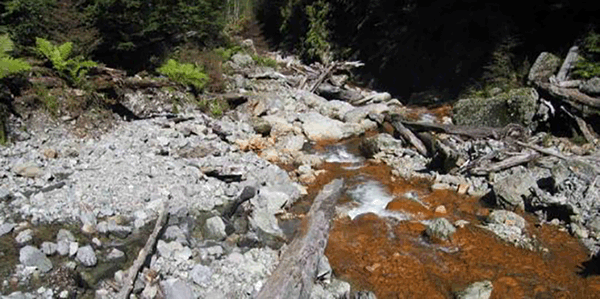 |
|
An unimpacted tributary (left) mixes with water contaminated by historical mine drainages at Cascade Creek, Denniston. Photo: CRL Energy. |
|
|
|
|
|
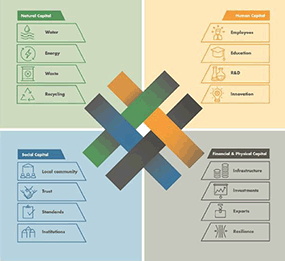
|
The four living standards framework capitals that the New Zealand metals industry currently contributes to include natural capital; human capital; social capital; and financial and physical capital. Image: HERA. |
|
A new report commissioned from BERL by HERA shows that the New Zealand metals industry is a strong contributor to both the economy and the living standards of New Zealanders.
The report measures the industry’s performance using Treasury’s Living Standards Framework (LSF), making the metals industry the first to review their performance against the LSF inter-generational wellbeing assessment.
The assessment reveals that the metals industry is a strong contributor to New Zealand’s economic performance, with the manufacturing component of the industry alone currently providing almost 30,000 full-time equivalent (FTE) jobs and generating around $3.3 billion in gross domestic product (GDP) each year.
MORE →
|
|
|
|
|
|
A landmark study by the Medical Research Institute of New Zealand and published in the international journal BMC Pulmonary Medicine shows, for the first time, that nebulisation using oxygen as the driving gas to deliver drugs is potentially dangerous for acutely unwell Chronic Obstructive Pulmonary Disease (COPD) patients compared with room air.
An estimated 200,000 New Zealanders suffer from COPD - the clinical term for both emphysema and chronic bronchitis.
“Until now it has been thought that oxygen as a means of delivering vital nebuliser therapy has been safe for patients hospitalised with acute flare-ups” says MRINZ Director Professor Richard Beasley. “This study, however, shows that high flow oxygen to nebulise the medication can actually cause harm. Our results show excessive oxygen actually reduces ventilation, and, in some patients, causes a substantial build-up of carbon dioxide to risky levels,” he says.
Watch Professor Beasley's interview about the research on TV3's NewsHub.
|
|
MORE →
|
|
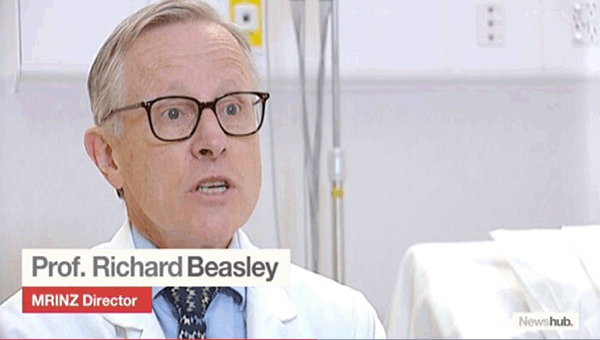 |
|
MRINZ Director Professor Richard Beasley on TV3's NewsHub. |
|
|
|
|
|
The Malaghan Institute’s ground-breaking CAR T-cell therapy programme to treat cancer has hardly been out of the news in the last two months, with coverage on radio, TV, and in print. The increase in media interest is in part due to cancer survivor and self-declared ‘genetically modified organism’ David Downs, who received a similar treatment in the United States, launching the "Down with Cancer" fundraising campaign in September as part of the effort to bring the treatment here.
Malaghan's version of CAR T-cell therapy, a revolutionary new cancer treatment which redirects a patient’s own immune cells to fight the disease, involves modifying a patient’s immune cells (T-cells) in the laboratory. The modified T-cells are then returned to the patient, where they can attack and destroy cancer cells.
Clinical director Dr Rob Weinkove says they hope to run a clinical trial to test safety and efficacy in 2019.
MORE →
|
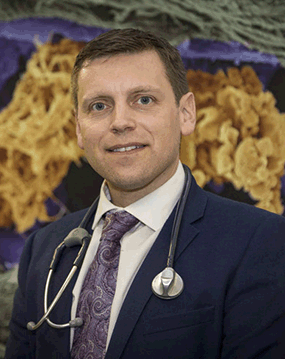
|
Dr Robert Weinkove, Clinical Director at the Malaghan Institute of Medical Research, has been awarded a Clinical Practitioner Research Fellowship worth more than $800,000 over five years, for his clinical and translational research into CAR T-cell therapy. Photo: Malaghan Institute. |
|
|
|
|
|
|
An unexpected find by the Malaghan Institute’s parasitic disease team might make some instinctively squeamish – it seems that certain gut parasites might actually be doing their human hosts a favour. Certain species of parasitic worm provide long-lasting protection against infection from other species of parasites in other organs, contradicting our traditional understanding of parasitic worms as acting to dampen the immune system, which would predict weaker protection from later infections.
“We found that, quite unexpectedly, if you infect with a gut worm prior to infecting with a hookworm, which migrates through the lung, the gut worm protects against the hookworm infection,” says Dr Kara Filbey, whose recent paper, published in the science journal Mucosal Immunology, was the culmination of four years of research.
The great news is, for those choosing not to act as hosts, is that the benefits of having an amped-up immune response to the gut worm’s competition remains even after the gut worms are removed.
Dr Kara Filbey also talked to RadioNZ about the team’s findings and the implications for treating allergic diseases such as eczema and coeliac disease.
|
|
MORE →
|
|
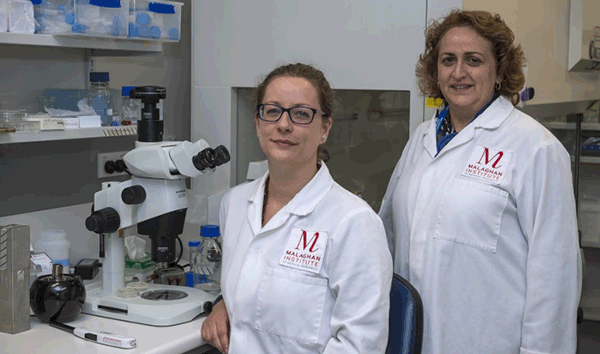 |
|
Dr Kara Filbey (left) and Mali Camberis. Photo: Malaghan Institute. |
|
|
|
|
|
IRANZ has gone social. For up-to-date information about the activities of our member organisations and same-day notification of updates to the website follow us on the link below.
FOLLOW HERE →
|

|
|
|
|
|
|
|
|
WHO WE ARE
IRANZ is an association of independent research organisations. Its members undertake scientific research, development or technology transfer. Members include Aqualinc Research Ltd, BRANZ, Cawthron Institute, CRL Energy Ltd, Centre for Space Science Technology (CSST), Heavy Engineering Research Association (HERA), Leather & Shoe Research Association (LASRA), Lincoln Agritech Ltd, Mackie Research, Malaghan Institute of Medical Research, Medical Research Institute of New Zealand (MRINZ), Motu Economic and Public Policy Research, New Zealand Institute of Minerals to Materials Research, PlantTech Research Institute, Titanium Industry Development Association Ltd (TiDA Ltd), Transport Engineering Research NZ Ltd (TERNZ), and WSP Opus Research.
|
|
Contact: Dr Rob Whitney, Executive Officer, mobile: +64 27 2921050, email: information@iranz.org.nz
|
| Copyright © iranz |
|
|
|
|
|